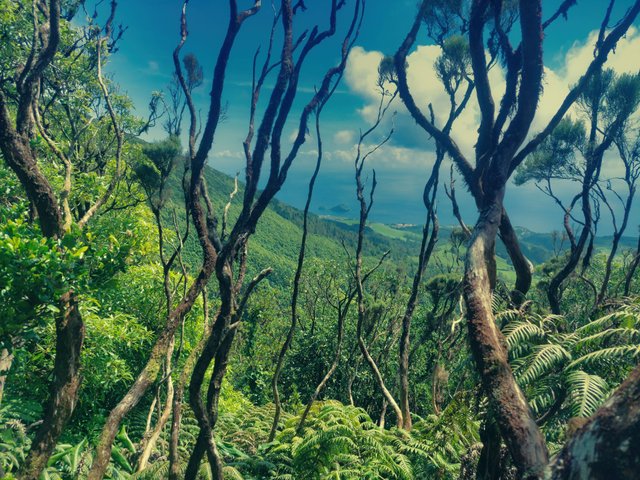Italy Community
Did Gonçalo Velho Cabral Discover the Azores?
There are many doubts and few certainties (if any) regarding the discovery of the archipelago. In fact, it has not yet been possible to determine precisely when, by whom, and under what circumstances the Azores were discovered. The silence of contemporary documents and the imprecision of cartographic data are the main reasons for this uncertainty.
Basically, we can identify three main theories about the discovery of the archipelago:
The classical or Gonçalvista theory, which argues that the Azores were discovered in the first half of the 15th century by sailors under the command of Prince Henry the Navigator, more specifically by Gonçalo Velho Cabral in 1432.
The "trecentista" (14th-century) theory, which suggests that knowledge of the archipelago dates back to the 14th century, a claim supposedly supported by cartographic evidence from that time.
The theory based on the Valsequa map, which states that the Azores were first found in the 15th century by sailors of Prince Henry the Navigator (as the Gonçalvista theory claims) but a little earlier (1427) and by a different sailor, Diogo de… possibly Diogo de Silves.
For a long time, people believed in the version put forth by Gaspar Frutuoso. According to this renowned 16th-century Azorean chronicler, the Azores were discovered by Gonçalo Velho Cabral, a sailor who, under the orders of Prince Henry, reached Santa Maria in 1432 and São Miguel in 1444. To reach these conclusions, the author relied, as he himself admitted, on oral tradition—specifically, "the recollections of respected men from this island of São Miguel."
Similarly, the account of Diogo Gomes, a Portuguese navigator from the second half of the 16th century, states that the Azores were discovered around 1431–1432 under Prince Henry’s command, which aligns with Gaspar Frutuoso’s claims. To arrive at the name of Gonçalo Velho Cabral, it is plausible that Gaspar Frutuoso also drew from a passage in João de Barros’ work, which states that in 1449, Prince Henry was granted authorization to settle the seven islands of the Azores. These islands had already been discovered, and some livestock had been introduced on them under the orders of Gonçalo Velho Cabral. If this was indeed the case, it would have been a hasty conclusion, as the explicit statement is that Gonçalo Velho Cabral released livestock on the islands and appeared as a potential settler, but not necessarily as their discoverer.
One of the most ardent defenders of the Gonçalvista theory is the historian from Santa Maria, Manuel Monteiro Velho Arruda. Since the 19th century, some scholars have argued that the archipelago was already known before the 15th century and that Prince Henry’s men merely rediscovered it. This is the "trecentista" theory.
To support their claims, its proponents rely on various 14th-century maps, which depict several islands west of Portugal that, according to them, could only be the Azores. These documents include the Libro del Conoscimiento, written around the mid-14th century by a Castilian Franciscan friar, the Catalan Atlas of 1375, and Solieri’s map of 1385, among others. However, these mysterious islands, with exotic names (del lobo, de las cabras, del brasil, de la ventura, columbiaria, de Sant Jorge, de los conejos, and de los cuervos marinos), appear much closer to Portugal than the actual Azores (about half the real distance) and in a geographic arrangement different from that of the Azorean archipelago.
More recently, this hypothesis has been criticized by various researchers who argue that the islands depicted on 14th-century maps—wrongly identified as the Azores—are merely imaginary islands and should not be given any credibility. This idea is seen as a product of the romantic imagination of certain historians. Some even believe that, given the technical knowledge available in the 14th century, it would have been impossible to sail to the Azores. According to this view, it was not with the 14th-century galleys but with the 15th-century Portuguese caravels that it became possible to reach and return from the Azores. Without caravels, oceanic navigation and the maneuver known as the "volta do largo" (which enabled the discovery of the archipelago) would not have been feasible. This is, at least, the firm opinion of Admiral Gago Coutinho.
From the early 20th century onwards, one document has attracted particular interest among those studying the issue: the 1439 map by the Catalan cartographer Gabriel de Valsequa. This interest is due to two important factors:
a) The map already depicts the Azorean archipelago with remarkable accuracy, albeit with quite different names, such as ylha de sperta, gutrila, ylha de l’inferno, ilha de frydols or fruydols, yela de osels, yilla de..., ylha de corp-marinos, and coingi.
b) This depiction is accompanied by a legend stating: "Aquestes ilhes trocades p. Diego de….? Pelot del rey de Portogall an lay MCCCCXXVII."
The second name of the pilot appears illegible, leading to various interpretations: Diogo de Gulen, Diego de Seville, Diego de Sunnis, Diego de Sintra, and finally, Diogo de Silves. This last reading, proposed by Damião Peres, has gained widespread acceptance among scholars.
Thus, in the absence of more convincing arguments, most historians now accept that the Azores were, in fact, discovered by Diogo de Silves, a sailor under Prince Henry’s command, in 1427.
As for the islands that appear in 14th-century maps, it is highly likely that they were merely the product of the vivid imagination of authors who recounted great journeys through the then-accessible world. The fact that this group of islands continued to appear in some 15th-century maps—alongside the correctly depicted real Azores—suggests that cartographers of the time did not equate the actual archipelago with the fictional islands from the 14th century.
In any case, the so-called Gonçalvista theory, which for a long time was considered the natural and obvious explanation for the discovery of the Azores, seems increasingly difficult to sustain. Indeed, the Valsequa map effectively shatters the notion that Gonçalo Velho Cabral was the first discoverer of the archipelago.

I am sharing photos of landscapes, moments and experiences. Nature and sea are the most visited themes in my photo collection, but any attention-grabbing aspect can be photographed. Hope you enjoy it...
| Category | #italy |
| Location | São Miguel Island - Azores |

)
Upvoted! Thank you for supporting witness @jswit.
Downvoting a post can decrease pending rewards and make it less visible. Common reasons:
Submit